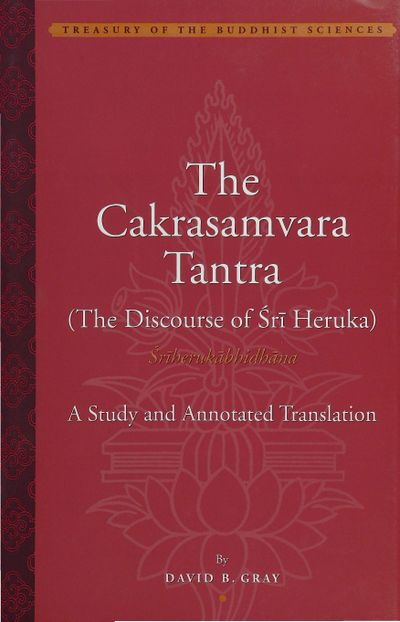The Cakrasamvara Tantra (The Discourse of Sri Heruka) - A Study and Annotated Translation (2007)
No edit summary |
No edit summary |
||
| (3 intermediate revisions by the same user not shown) | |||
| Line 60: | Line 60: | ||
*{{i|XXXII. The Procedures of the Animal Sacrificial Victims, the Means of<br>Achieving the Zombie, and the Creation Stage|300}} | *{{i|XXXII. The Procedures of the Animal Sacrificial Victims, the Means of<br>Achieving the Zombie, and the Creation Stage|300}} | ||
*{{i|XXXIII. The Reverential Procedure of Secret Worship|305}} | *{{i|XXXIII. The Reverential Procedure of Secret Worship|305}} | ||
*{{i|XXXIV. The Procedure of Summoning via the Fire Sacrifice of the Nondual Messenger|308}} | *{{i|XXXIV. The Procedure of Summoning via the Fire Sacrifice of the Nondual<br>Messenger|308}} | ||
*{{i|XXXV. The Procedure of the Nondual Ritual Action and the Method of<br>Cheating Black Death|312}} | *{{i|XXXV. The Procedure of the Nondual Ritual Action and the Method of<br>Cheating Black Death|312}} | ||
*{{i|XXXVI. The Procedure of Summoning the Reality Worship|317}} | *{{i|XXXVI. The Procedure of Summoning the Reality Worship|317}} | ||
| Line 74: | Line 74: | ||
*{{i|XLVI. The Procedure of Ritual Actions with the Five ha Syllables|358}} | *{{i|XLVI. The Procedure of Ritual Actions with the Five ha Syllables|358}} | ||
*{{i|XLVII. The Procedure of All Ritual Actions of the Sarvabuddhaḍākinī<br>Mantra|360}} | *{{i|XLVII. The Procedure of All Ritual Actions of the Sarvabuddhaḍākinī<br>Mantra|360}} | ||
*{{i|XLVIII. The Procedure of the Maṇḍala of the Hidden Abode of all Heroes and Ḍākinīs|364}} | *{{i|XLVIII. The Procedure of the Maṇḍala of the Hidden Abode of all Heroes<br>and Ḍākinīs|364}} | ||
*{{i|XLIX. The Procedure of Transforming the Victim who is Born Seven Times|367}} | *{{i|XLIX. The Procedure of Transforming the Victim who is Born Seven Times|367}} | ||
*{{i|L. The Procedure of the Domination Fire Sacrifice and the Teaching of the<br>Stages in Relation to the Seats, etc.|370}} | *{{i|L. The Procedure of the Domination Fire Sacrifice and the Teaching of the<br>Stages in Relation to the Seats, etc.|370}} | ||
Latest revision as of 14:42, 6 November 2020
This is the first complete, critical English translation of the Cakrasamvara Tantra, also known as the Śrīherukābhidhāna and Laghusamvara. Composed in India during the eighth century, this text is a foundational scripture of one of the most important Indian Buddhist tantric traditions, as evidenced by the vast number of commentaries and ritual literature associated with it. Along with the Hevajra Tantra, it is one of the earliest and most influential of the Yoginī Tantras, a genre of tantric Buddhist scripture that emphasizes female deities, particularly the often fiercely depicted Yoginīs and Ḍākinīs.
The author’s introductory essay provides an analysis of the historical and intellectual contexts in which the text was composed, including its complex interrelationship with Hindu Śaiva traditions, and investigates the history of its adaptation by Buddhists. The translation was made on the basis of the surviving Sanskrit manuscripts of the Tantra and its commentaries, as well as parallel passages in related explanatory tantras (vyākhyātantra). It is also takes into consideration two different Tibetan translations of the root text, and several Tibetan commentaries. The translation itself is heavily annotated, with extensive translations from the Indian and Tibetan commentaries on the text. Includes a trilingual glossary and index. (Source: The American Institute of Buddhist Studies)
| Citation | Gray, David B. The Cakrasamvara Tantra (The Discourse of Śrī Heruka): A Study and Annotated Translation. Treasury of the Buddhist Sciences. New York: American Institute of Buddhist Studies; Columbia University's Center for Buddhist Studies and Tibet House US, 2007. |
|---|---|


